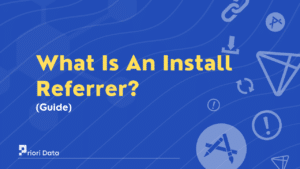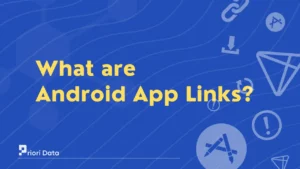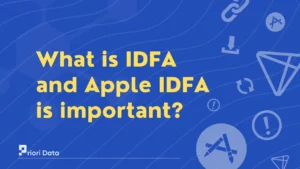Interstitial ads appear in the middle of the screen, interrupting the user’s experience. These ads appear as static, animated, or interactive content that engages with users. They are different from traditional ads, which appear at the top or bottom of a page or app.
Businesses have turned towards mobile advertising to reach their target audience. These ads are usually displayed for a few seconds before they disappear.
This intends the user to perform a particular task through the ads. The main goal is to grab the user’s attention and increase the likelihood of them engaging with the ad.
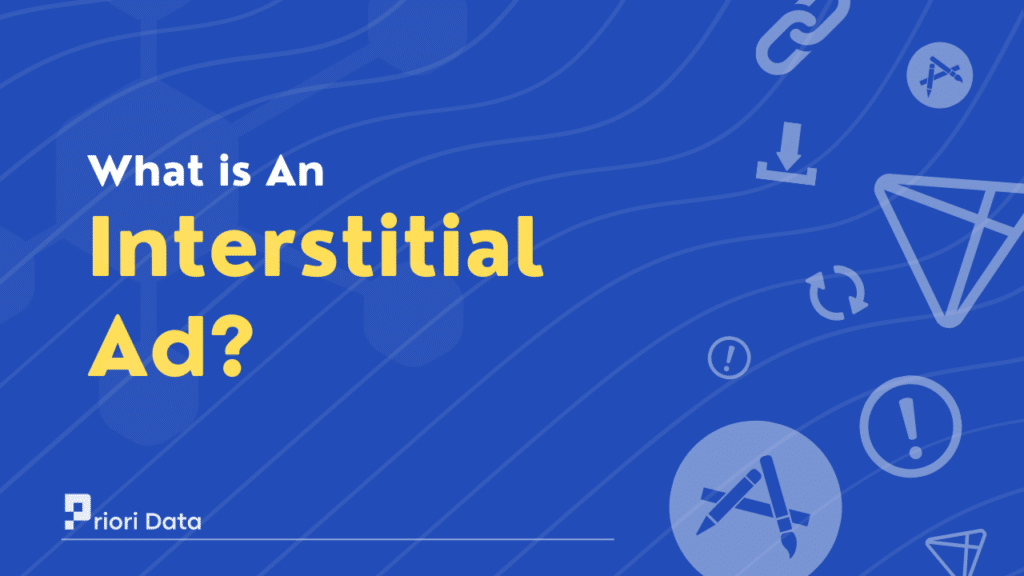
What is the importance of interstitial ads?
Interstitial ads are often used in games or other apps that take a break from the app for a certain time from users.
These ads can grab our attention with bold colors and images or text. Businesses use interstitial ads to promote their products or services. This offers special deals or directs users to other areas of their website or app.
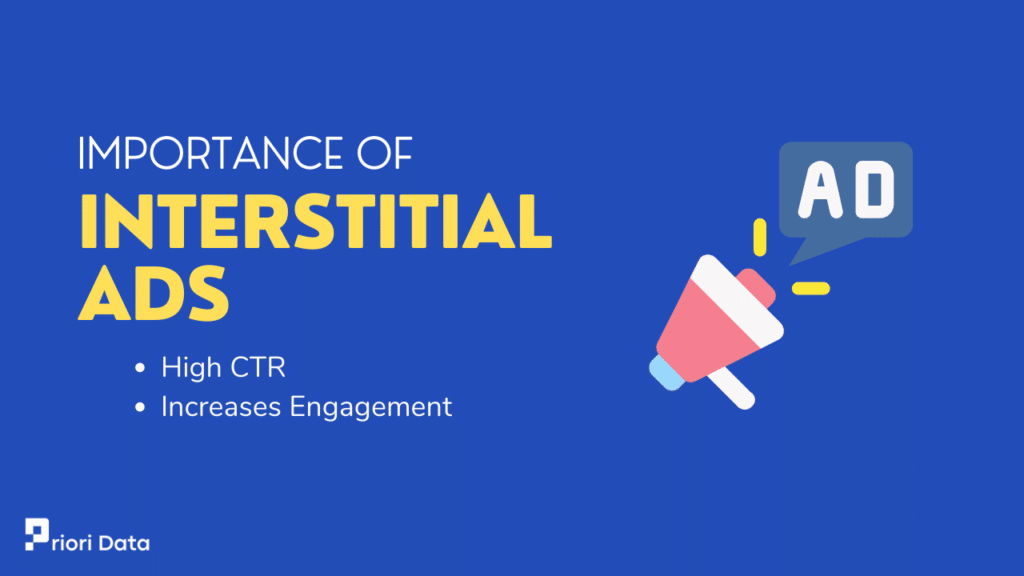
1. High CTR
Interstitial ads have a high click-through rate (CTR) compared to other forms of mobile ads. As they appear in the middle of an app, so the user is more likely to pay attention to them.
These ads can target users with specific demographics, such as age or location. This ensures that the ads are relevant to the user, which can improve the user experience. This can increase the likelihood of a click-through.
2. Increases Engagement
Interstitial ads can improve user engagement with the app. These ads are an effective way for app developers to generate revenue from their apps since these ads occupy the entire screen.
They have a higher visibility and click-through rate than other ads. This translates into higher revenue for the developer.
Make sure to ensure that excessive use of these ads can impact negative experiences. Developers should ensure ad frequency so that they aren’t overwhelming the user. Interstitial ads are popular as they deliver messages to users in an effective way.
They are also considered more engaging than other forms of mobile advertising. This includes rich media, such as videos or images, that capture the user’s attention.
What are the benefits of interstitial ads?
Interstitial ads allow advertisers to deliver a more immersive experience to users. Videos and interactive content can engage users.
So, advertisers can take this as an advantage to deliver more targeted ads. For example, a fashion brand may use an interactive ad to allow users to try on virtual outfits.
Interstitial ads can also drive app downloads and installs. When a user clicks on an ad, they are been navigated to Google Play Store to download the advertised app. These ads make an effective way to increase app installs and drive user acquisition.
Interstitial ads and banner ads are both common types of mobile advertising formats. But they both work in different ways let’s explore them in detail.
A banner ad is a small rectangular image or text-based ad that appears on the top or bottom of a mobile app screen.
These ads are static and remain on the screen while the user interacts with the app. Banner ads are often used to promote a product or service or to drive traffic to a website.
An interstitial ad is a full-screen ad that appears such as after the completion of a level. It can also appear between different sections of an app. Interstitial ads are more attention-grabbing than banner ads. As they take up the entire screen, they can also be more disruptive to the user experience.
Interstitial ads can have high click-through rate (CTR) rate than banner ads. Both types of ads can be effective in reaching users and promoting products or services. But it’s important to consider the user experience and choose the right ad format for your goals.
What are the best practices for interstitial ads?
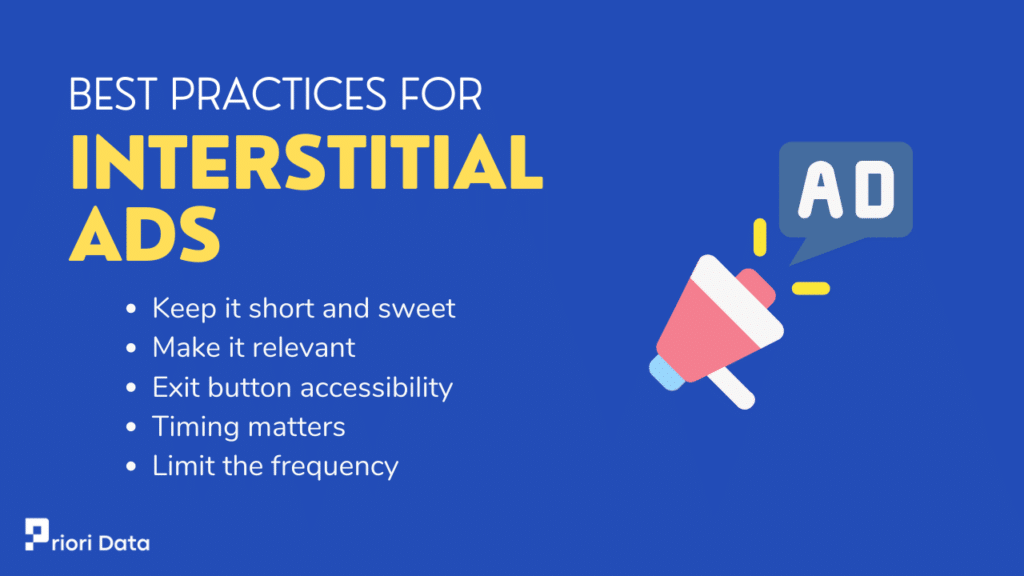
1. Keep it short and sweet
Interstitial ads should be brief and to the point. Use concise and compelling headlines and visuals to capture the user’s attention.
Make sure that your interstitial ad has clear and concise messaging. Use high-quality visuals in your interstitial ads. Users are more likely to engage with an ad that is easy to understand.
2. Make it relevant
Ensure that your ads are relevant to the user’s previous interactions within the app. This means targeting the ad based on the user’s interests, behavior, and demographics.
Users are more likely to engage with an ad that is relevant to their interests. Irrelevant ads can lead to a negative user experience.
3. Exit button accessibility
Make sure that users have an easy way to close the ad. Users may become frustrated if they are unable to close an ad or if the ad is difficult to close. Users should find it easy to dismiss an ad and return to the app’s content.
Providing a clear and easy way to close the ad can help to improve the user experience.
4. Timing matters
Place interstitial ads at natural breakpoints in the user’s flow through the app. For example, after completing a level in a game, or when switching between sections in an app.
Avoid interrupting important tasks or transitions, such as during gameplay or checkout processes.
5. Limit the frequency
Limit the frequency of display of your interstitial ads. Displaying the same ad can reduce the effectiveness of your advertising campaign.
It’s important not to interrupt the user experience too much with ads. Consider factors like session length or app usage when determining to show ads.
By following these best practices, you can create effective interstitial ads. That can engage users creating a positive experience with your mobile app.
FAQs
Ques 1: What is the difference between interstitial ads and pop up?
Ans: Interstitial ads are full-screen ads that appear between the app content. While pop-up ads are small ads that appear as a separate window on top of the app’s content.
Ques 2: What are the 4 main types of ads?
Ans: The 4 main types of ads for mobile apps are display ads, mobile ads, native ads, and video ads.
Ques 3: What is the difference between interstitial ads and rewarded ads?
Ans: Interstitial ads are full-screen ads that appear at natural transition points. While rewarded ads are ads that offer users rewards in exchange for watching the ad.
Ques 4: What is the size of a mobile interstitial ad?
Ans: The size of a mobile interstitial ad can vary, but it is around 320×480 pixels.
Ques 5: What are the advantages of an interstitial ad?
Ans: The advantages are higher engagement and better revenue potential than other ad formats. They have the potential to grab the user’s attention during natural app transitions.




